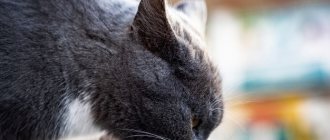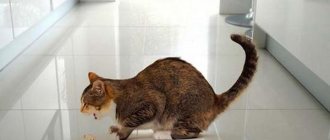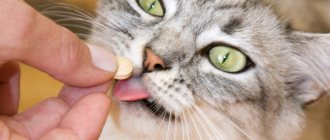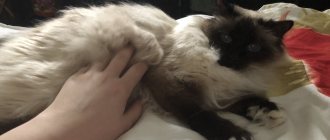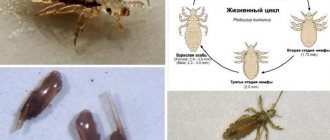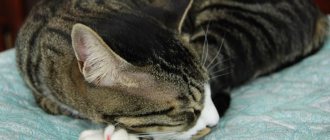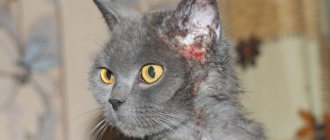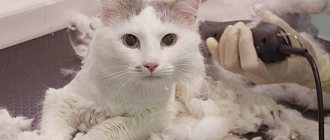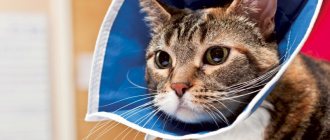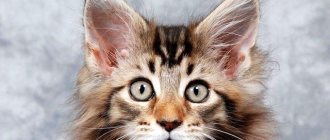Castration, with today's level of veterinary medicine,
has a very low risk for healthy young animals (death after surgery occurs in less than 1 in 500 cats) and protects against possible offspring, animal aggression, and unwanted odors in the apartment.
However, after castration, the animal has a risk of developing health problems, such as obesity, urolithiasis, and difficulties in the functioning of the cardiovascular system. That is why a neutered cat needs to choose a balanced diet. Let's figure out whether it is possible to feed him regular food.
In the article, we looked at dry and wet food, made a rating of the economy, premium, super premium, and holistic classes, and found out whether it is necessary to feed the cat with special food.
Diet before sterilization
Sterilization, like any surgical intervention, requires mandatory preparation. In addition to treatment with anthelmintic drugs, it necessarily includes a starvation diet. Food must be removed from the diet 10-12 hours before surgery - this is a prerequisite. If this is not done, the cat may vomit during the procedure. Pets tolerate fasting during such a time quite easily, so the owner should not suffer from remorse and try to feed his pet. But, if food needs to be removed from the diet, then drinking, on the contrary, should be more plentiful than before.
Sometimes it is more convenient to drink from a syringe
Introduction – the concept of spaying and neutering domestic cats
Sterilization of a cat and castration of a cat (this is how the procedure is most often prescribed in the price list of a veterinary clinic) are not entirely correct terms. The thing is that the operation of castration and sterilization is applicable to cats of both sexes, that is, both female and male animals can be sterilized and neutered.
To understand the meaning of this more clearly, it is worth giving the full concept of the term:
- Castration is the complete surgical removal of the gonads of cats of both sexes. This procedure is radical and involves removing the testes in cats, the ovaries in cats, and in some cases the ovaries and uterus. After such an operation, the hormones testosterone (males) and estrogen (females) cease to be released in a mature animal, which leads to the complete impossibility of reproducing offspring.
- Sterilization of an animal is a rather rare procedure (despite the generally accepted opinion), and involves a simple, in the understanding of veterinarians, operation of ligation (ligation/soldering) of the fallopian tubes in a cat and the vas deferens in a cat. And most importantly, after the sterilization procedure, all sexual functions, instincts and behavior remain at the same level, but without the possibility of fertilization and pregnancy.
What is the difference between castration and sterilization procedures?
The main differences between these two procedures are not in the division of the operation by gender, but in the following:
- The castration procedure is carried out to correct the behavior of the animal, and is most often used for cats, while the sterilization operation is performed most often for cats (females), and is carried out for medical reasons.
- The castration procedure provokes a stop in the production of sex hormones, while after sterilization the hormonal background of the animal does not change, which means that the cat will persistently search for a partner, accompanying its search with heart-rending meowing, aggression, anxiety, and a very unpleasant feature of cats is making “smelling” marks throughout the apartment. This is why sterilization surgery is not suitable for correcting the behavior of adult felines (by the way, this also applies to dogs).
Khomutinnik Ekaterina Igorevna Chief veterinarian. Specialization: soft tissue surgery, abdominal and thoracic surgery, endosurgery |
Conclusion
Most often, it is castration rather than sterilization of the cat, which, according to many veterinarians, is much more humane than ligation of the fallopian tubes and testes. Veterinarians believe that it is better to immediately and completely remove inactive organs than for them to work in vain over and over again, bring suffering to the animal, and remain the main risk factor for the development of tumors and purulent processes in the genital organs, and not only.
Therefore, according to the modern concept, sterilization of a cat is the same castration that is performed for cats, but due to the fact that the cat becomes sterile, that is, unable to become pregnant, ordinary people consider this procedure to be sterilization.
Feeding after surgery
First of all, you need to decide how many hours after sterilization you can offer your cat water. As soon as the cat recovers from anesthesia, you can give it a little drink.
To do this, you can use a syringe, since she will be able to drink and eat on her own only on the third day after the operation.
But it is recommended to offer her something to drink as usual, in a bowl, no earlier than 3-4 hours later, and food no earlier than 24 hours later. Moreover, you should not persistently try to feed your pet if it refuses. There won’t be any problems if he eats a few hours later, but if he refuses water or food for more than two days, it’s time to sound the alarm and contact a veterinarian.
Cat breed British Chinchilla, a long-haired miracle with green eyes and a calm character
So, it is recommended to start feeding your pet the next day, but only if she herself begins to show interest in food. Usually in the first few days there is no appetite. The food these days should be liquid so that the cat does not have problems with bowel movements. Stool that is too hard can cause the stitches to come apart.
In addition, do not feed too hot or cold food. Food should be at room temperature. In order not to overload the stomach and speed up the digestion process, the daily intake should be reduced several times, gradually bringing it to its previous size. If your cat tends to overeat, you can reduce the portion size.
How to feed a sterilized cat?
Proper feeding of a feline who has undergone surgery to eliminate the reproductive instinct involves more than just choosing the right foods and maintaining balance.
The owner of the animal should first study how to properly feed the cat after sterilization, so as not to affect its eating habits too much and not harm the body, which has undergone strong hormonal changes.
Immediately after surgery to remove the reproductive function, the cat may refuse to eat for 24 hours. You should not try to force feed the animal, since refusal to eat in the postoperative period is the norm. The main thing is to ensure constant access to water.
The day after surgery, feeding the animal involves eating only liquid pureed foods - raw or boiled eggs, meat broths, special canned food, the manufacturers of which target them for the postoperative recovery period.
The cat returns to its usual diet approximately 3-4 days after surgery. Feeding sterilized cats does not imply a radical change in the animal's habits. There is no need to switch an animal from industrial food to natural food and vice versa. It will be enough to discipline the regime and make some adjustments to the composition of the diet.
Boiled eggs
The following rules must be observed:
- Do not exceed the amount you write per day. With natural nutrition, portion sizes should not exceed 200 ml per day, depending on the weight of the animal. If a sterilized cat is fed dry commercial food, it is important to follow the dosages recommended on the packaging.
- It is advisable to switch to food for sterilized felines. Their balance is designed in such a way that the cat feels sufficiently full from the dosage offered to her per day.
- To avoid problems with weight gain that are typical after sterilization, it is important to feed the animal at the same time. For example, this could be morning and evening with intervals between meals of approximately 12 hours.
If the cat is accustomed to eating more than 2 times a day, you can divide the prescribed amount of food into several meals, but do not exceed the total dose per day.
Features of nutrition at home
After surgery, there is a need to review the normal diet of an adult cat. This measure is associated with the changes that occur in the cat’s body during sterilization:
- the production of sex hormones stops, the pet becomes lazy, aggression and playfulness disappear, and a tendency toward obesity appears;
- the frequency of urination decreases, which can lead to stagnation of urine and the development of urolithiasis;
- due to the cessation of estrogen production, appetite increases;
- metabolism slows down.
There is no need to change the type of diet, but these factors must be taken into account. The diet should be planned so that proteins and carbohydrates predominate in it. You can’t completely give up fats; if you lack them, skin problems begin to appear, the hair becomes dull and begins to fall out. But their amount should not exceed 30% of the daily value.
Diet preparation
A properly composed diet is an opportunity to prevent urolithiasis and obesity.
In the first days, portions should be a third of the usual dose.
The cause of the disease may be an excess of:
- Vitamin A (found in cheese, liver, butter).
- Glutamic acid (found in seafood, fish, tomatoes).
- Magnesium (found in nuts, beans, chocolate).
- Phosphorus (found in eggs, fish, peas, corn).
The daily amount of feed should be 30-60 g per 1 kg of animal.
The daily norm contains:
- 35% protein. The animal's body does not produce it on its own.
- 35% carbohydrates, important for maintaining energy.
- 30% fat. Their deficiency contributes to the appearance of problems with the skin and coat, while an excess leads to excess weight gain.
Be sure to read:
Royal Canin food for sterilized cats: features, composition, wet, advantages and disadvantages
You cannot mix natural food and industrial feed.
Natural products
The cat, although not living in the wild, remains a predator. Therefore, the predominant part of the diet should consist of meat. Moreover, if she did not eat vegetables and cereals before, it is unlikely that she will change her eating habits after the operation. The diet must be compiled not only taking into account the characteristics of the pet, but also the needs of its body:
Fresh beef
Meat
The lack of proteins is compensated by eating meat. Preferably made from chicken, turkey or rabbit. These types of meat are considered the most dietary. Several times a week you can give beef or offal (heart, liver or ventricles).
To exclude helminthic infestations, meat must be well frozen for a week or heat-treated. By-products should only be given boiled. A cat should eat approximately 70-120 grams of meat per day.
Fish
Fish is characterized by a high content of phosphorus, an excess of which leads to disorders of the urinary system. Therefore, its amount in the diet of a sterilized cat should be minimal, no more than 10% of the total amount of food. It is allowed to replace meat with sea fish once a week.
Cereals
Porridges are considered the main source of carbohydrates. Rice, buckwheat, barley or wheat porridge are considered suitable for neutered cats. They can be cooked either in water or in meat broth without adding salt. If the cat is reluctant to eat, they are mixed into the minced meat. Maximum quantity - 1 tbsp. l. per day.
Dairy
Feeding with kefir, fermented baked milk, cottage cheese, and classic unsweetened yogurt is encouraged. In this case, it is advisable to choose products for dietary nutrition, the mass fraction of fat in which does not exceed 10%. The daily norm is no more than 60 grams.
Vegetables
These are some of the least favorite types of food for cats. You shouldn’t give them on their own; it’s better to puree them and mix them with minced meat. All types of cabbage, carrots, zucchini and pumpkin are considered permitted. You can also give fresh apples from time to time, but only if the cat showed interest in them before the operation. Even if your furry pet enjoys eating vegetables, you should not give them more than 50 grams per day.
A sterilized cat's diet must contain a sufficient amount of liquid. It is better if it is clean drinking water. However, given that furry pets consume it reluctantly, water can be replaced with low-fat meat broth. No matter what liquid your cat drinks, it should always be fresh. In summer it is recommended to change the water and wash the bowl 4-5 times a day, in winter - about 2 times.
Be sure to add a few drops of vegetable or butter to your food. This will help avoid a lack of fat and keep your pet's coat thick and healthy.
River fish is prohibited
What to feed a cat after sterilization?
You should not change your pet's eating habits too much after surgery. If your cat is accustomed to eating ready-made industrial super-premium or holistic food, you should decide which food from the pet’s usual manufacturer is best to switch to after sterilization.
With natural nutrition before surgery, it is not at all necessary to switch the animal to industrial food after the intervention. The most important thing is to continue to maintain the correct balance of feeding, taking into account the characteristics of the breed, and to minimize the substances that lead to weight gain - fats and carbohydrates.
- It's all for me!..
It is worth paying special attention to the number of servings, since a sterilized cat loses the feeling of fullness. Overfeeding the animal is strictly not recommended.
The best food for sterilized cats
The main principle of feeding ready-made food is to purchase only super-premium or holistic dry food for sterilized cats. Below-grade prepared foods, especially the widely advertised low-cost economy options, have an incorrect balance and are also high in fiber, starch and other harmful substances.
Eating such food leads to a gradual weakening of the animal, excessive weight gain, which is dangerous for a sterilized cat, and the development of urolithiasis.
Most super-premium manufacturers offer their customers specialized dry food for castrated and sterilized cats, which takes into account all the characteristics of the animal after surgery. In addition, such feeds often contain useful microelements and immune stimulants.
Determining what food is best to feed an animal can only be determined by experience. Most often, the owner of a cat that lacks the reproductive instinct will only need to change the manufacturer’s super-premium food to a similar option marked “for sterilized cats.” If your pet refuses to eat the food offered, you should try similar options from other manufacturers.
Royal Canin
The most famous manufacturers of super-premium food, which contains the ideal balance for an animal without reproductive function:
- Purina Van;
- Royal Canin;
- Eukanuba;
- Akana;
- Proplan;
- Grandorf.
It is important to follow the daily feeding rate suggested by the food manufacturer on the packaging. You should not indulge the animal’s whims and increase the dosage, as this will inevitably lead to weight gain.
Natural food
Cat owners who have trained their animals to eat natural products will also be faced with the problem of what to feed their sterilized cat at home after sterilization. It is necessary to limit the amount of salt and carbohydrates. The first leads to the risk of developing urolithiasis, and carbohydrates can cause rapid weight gain, which is typical for sterilized cats.
The animal's diet may consist of the following products:
- Lean meats. This includes chicken, rabbit, turkey and beef. For gourmets, you can use horse meat. It is advisable to store the meat in the freezer and lightly boil it before feeding, which will rid the meat fibers of the possible presence of parasites in them. You can pamper your cat with chicken wings and necks.
- Meat by-products serve as an excellent additive to meat . The calorie content is several times lower than that of the main product, so more of them will be needed to saturate the cat. Liver, kidneys and lungs, hearts and stomachs are suitable.
Dairy
- Dairy products are allowed to be given to your pet in limited quantities ; whole milk is undesirable. Preference should be given to cottage cheese and low-fat kefir.
- Vegetables are a rich source of vitamins and minerals essential for a neutered animal. You can add them to meat either raw or boiled, after grinding them in a blender.
- Green grass , which you can grow yourself or purchase at a pet supply store. It is forbidden to feed a domestic sterilized cat grass from the street.
- Cereals that can be cooked in unsalted broth after boiling lean meat. Buckwheat, rice, corn and barley will be beneficial for your cat.
- Fish exclusively from oceanic and marine species should be present in the diet of a sterilized cat no more than 2 times a week due to its high phosphorus content. It is strictly forbidden to feed raw fish to your pet; before feeding it, it must be boiled and all bones removed.
A useful and nutritious product for feeding a cat after sterilization will be special canned food that you can prepare with your own hands. The resulting food will be safe, since the owner knows for sure that it does not contain unwanted ingredients and salt. The process for preparing canned food is as follows:
- Chicken wings and necks, as well as pork ears and cartilage should be kept in the freezer for a week.
- Boil any chicken offal without salt or spices.
- Mix boiled offal and raw meat products, then pass them through a meat grinder. For greater benefits, add vitamin B12 to the resulting minced meat, which can be purchased in capsules at a regular pharmacy.
- The resulting mixture can be preserved in two ways: rolled into sterilized glass jars or packaged in bags and frozen.
When feeding a sterilized cat with natural products, it is important to remember the need for a varied menu. It is undesirable for an animal to have only one product in its diet, for example, chicken. It is important to monitor the quality of products offered to animals, especially for meat and fish products.
What and why not
In addition to the mandatory ones, there are also undesirable foods, the presence of which in the diet of a neutered cat is strictly prohibited. These usually include the favorite ingredients of homemade, human food:
- salt, seasonings, spices;
- river fish (the risk of helminth infection increases);
- legumes;
- semolina, oatmeal and pearl barley porridge (the first two practically do not contain nutrients, the latter creates additional stress on the gastrointestinal tract, as a result of which the pet experiences constipation);
- pork (refers to fatty meats that are contraindicated in dietary nutrition);
- raw eggs (risk of developing salmonellosis);
- smoked products (contain a lot of spices);
- potato;
- fatty dairy products.
In addition, you should not feed your cat food from the table. Food prepared for humans is often too fatty, salty and seasoned with spices, which is unacceptable for a pet’s delicate stomach. In addition, high salt content provokes urolithiasis.
Products harmful and hazardous to health
So that the nutrition of a sterilized cat is as healthy as possible and does not cause harm to the animal.
River fish
The following foods should be excluded from the diet:
- River fish, because it contains many bones that are dangerous to the internal organs of the animal.
- Fatty dairy products (above 10%).
- Oatmeal because it has too high a percentage of magnesium.
- Legumes and vegetables with high starch content. Potatoes can upset a neutered cat's stomach and cause rapid weight gain.
- Semolina porridge is not a healthy product because it has no nutritional properties and contains too many carbohydrates.
Smoked, fried, salted and pickled foods are also prohibited.
Norms and regime
Feeding should occur at strictly defined hours 2 times a day. The serving size depends on the weight of the animal and is calculated using the formula 30 g/kg. To correctly determine the portion size, the owner must constantly monitor the weight and adjust the amount of feed at the slightest fluctuation. A sufficient daily food intake is considered to be 150-250 grams.
If a cat shows signs of obesity (the ribs can no longer be felt), meals should be made in smaller doses. That is, increase the number of feedings to 4-5 times a day, reducing the volume of a single serving.
We recommend purchasing an automatic cat feeder, which will solve many of your pet’s nutritional problems. It accurately measures the quantity and dispenses the food exactly on time and notifies you about it on your smartphone.
And it would be absolutely ideal to add a water fountain to the kit so that your pet always has filtered, oxygen-enriched, fresh water.
Special food for neutered cats
Holistics
The best among holistic-class canned foods are:
- Applaws;
- Schesir;
- Gimpet.
They are all treats. They cannot be used as the main food. They are given a maximum of 2 times a week. They contain a lot of animal protein.
However, the vitamins and minerals needed for balance are missing. If you feed your pet only these canned foods, calcium stones (oxalates) may form in the kidneys or bladder.
Conventional industrial feed
When choosing ready-made food, the cat owner should know that economy-class food cannot provide even a healthy cat with all the necessary substances. They contain a large amount of heavy metal salts, which contribute to the development of problems with the genitourinary system. Therefore, to feed your sterilized pet, you should choose those belonging to the super-premium or premium classes.
It is advisable that the packaging bear a special mark “For sterilized cats” and contain information about protein absorption. This figure should not be lower than 80%. In addition, the food should be low in calories and contain a minimum amount of salts. It is also allowed to use regular food, but not below the holistic class. These foods are completely balanced and suitable for absolutely all pets.
Veterinarians' opinion
Evgeniy, 49 years old, Samara.
Before choosing food, I always advise having the animal’s urine tested. At a neutral pH level (6-6.5), universal, complete, super-premium canned food is suitable. If the urine is alkaline, it is better to feed the animal dry or wet food specifically for castrates.
Alina, 34 years old, Voronezh.
If castrates eat complete canned food (not necessarily special), the risk of developing urolithiasis is reduced. I recommend diluting wet food with water (10-20 ml) for cats and cats who don't drink enough. This increases moisture consumption.
How to choose the right one
All information indicating the quality of the food can be found from the information on the packaging:
- The detailed list of ingredients should be arranged in descending order. The main component is meat;
- the composition is clear and easy to read;
- the food should not be multi-component and contain flavoring additives;
- The composition must contain L-carnitine and L-lysine to normalize metabolism and maintain muscle mass.
In addition, a responsible manufacturer always indicates the daily allowance on the packaging. The smaller they are, the more nutritious the food. This condition is very important for owners of sterilized cats, because it is directly related to the amount of water, which requires three times more than food.
The correct choice of food is indicated by the well-being of the pet:
- thick and shiny coat;
- regular bowel movements;
- normal digestion.
You can also evaluate food based on the cat’s stable weight.
What to look for when choosing wet food?
In order for a cat to feel good, it is necessary to take a responsible approach to the choice of food. When purchasing a wet complete food or treat, you need to pay attention to:
- best before date;
- the conditions under which the product was stored;
- transparency of the composition;
- amount of meat and offal;
- ratio of calcium, phosphorus and magnesium;
- moisture percentage;
- the presence or absence of good reviews;
- manufacturer and country of manufacture (for example, Royal Canin canned food belongs to a French brand, but can be manufactured in France, Poland or Russia);
- individual needs of the animal;
- value for money;
- absence of flavorings and flavor enhancers.
The more meat in wet food, the better. However, ingredients such as rice, legumes or vegetables are also beneficial in small quantities. Therefore, when choosing canned food for sterilized pets, it is important to review the composition.
If the animal does not gain weight or is hyperactive, the daily dose indicated on the package can be increased. If signs of obesity are detected, the recommended daily amount of feed is reduced.
Review of recommended brands
The first place undoubtedly belongs to holistic foods such as Go!, Orijen and Acana. They are distinguished by high quality components and are completely suitable for sterilized cats. The protein content in them is from 40 to 70%. But despite this, pets with kidney problems should not be fed them constantly. The disadvantage of these feeds is their high cost, so before introducing them into the diet, the owner should adequately assess his purchasing power.
Suitable food can be selected in the middle price segment:
Purina ProPlan
Purina ProPlan
This food belongs to the premium class. The manufacturer produces a special line for sterilized cats. It has a high (more than 40%) animal protein content, but it also has disadvantages. Among the ingredients you can see corn and wheat gluten.
On sale you can find not only dry granules and canned food, but also pouches, and the source of proteins is varied. In addition to chicken and turkey, you can choose beef or sea fish food. If your cat has previously eaten food from this brand, it makes sense not to change the manufacturer.
1st Choice
1st Choice
Grain-free food from a popular Canadian manufacturer, produced in a specially developed line for neutered pets.
Not only does it contain a balanced composition of all the necessary nutritional ingredients for a sterilized cat, but it facilitates hair care, ensuring its healthy shine and healthy skin, as well as normal functioning of the gastrointestinal tract and the prevention of obesity.
Its main advantage is that it is low in fat (only 9%), while proteins occupy 33% of the total composition. The source of protein, as a rule, is natural chicken meat. The entire line of flavors belongs to the super-premium class.
Hill's
Hill's
Excellent food from Dutch production. Almost the entire treatment line is suitable for sterilized cats, as it ensures the health of the cat’s urinary and urinary organs.
Available in all types: dry and canned food, spiders with pieces of meat in jelly. Protein source: natural chicken (32%). The disadvantage is the presence of corn gluten in the composition.
Perfect for long-term use, as it has a fairly affordable price.
Royal Canin
Royal Canin
The manufacturer of a well-known brand of food indicates an increased content of high-quality protein, up to 37%. However, if you look at the composition, the protein source is indicated as dehydrated animal protein (poultry) and plant protein isolate.
Therefore, it remains unclear from what kind of poultry meat it was produced. It also contains wheat, which often causes allergies in pets. The food is highly varied and is available in all varieties: dry granules, pouches, canned food and pates.
It is not recommended to feed your pet with economy-class food such as Kitekat, Whiskas and Friskies. In their production, low quality products are used, so they do not meet the daily needs of a sterilized cat.
The best industrial food for spayed and neutered cats
Cat food is divided into categories. Economy class is the least preferred option for sterilized cats. Products from such brands as Whiskas, Felix (Felix), Kitekat, Friskies, Perfect Fit will not benefit your pet. They contain virtually no meat or offal. As a rule, the protein component in them is represented mostly by soy, and it is supplemented with a small admixture of cereals. Despite the attractive price, a caring owner will not feed his pet such food. The danger of such products is that they contain special additives that attract the cat with taste and smell. As a result, she will ask for food more often and overeat.
We recommend reading the article about all classes of food for cats.
We present a rating of food of high quality categories.
Premium class
The most famous and popular among premium foods is Royal Canin. Available in volumes of 400 g, 2 kg, 4 kg and 10 kg. You need to look for packaging marked “sterilized 37,” meaning that it is intended specifically for cats that have undergone the sterilization procedure. Special lines of medicinal feed have also been developed. In addition, the manufacturer Royal Canin takes into account the age and gender of the animal.
The composition contains additives of synthetic origin, which are not very useful, and in some cats they can provoke allergic reactions.
The list of other popular and attractive price-quality ratios includes the following brands of food:
- Proplan;
- Hill's;
- Purina One.
Proplan and Purina One are manufactured by the same company. The first is produced in dry form, in packages of 1.5 kg and 3 kg, the second - in packages of 3 kg. They contain quite a large amount of meat and are well balanced. There is a huge variety of flavors on the market, so you can choose the most attractive option for your pet. For sterilized cats, food marked “sterilized” is intended, as well as “urinary” - for the prevention of urolithiasis.
Hills food is available in packages of 300 g, 1.5 kg, 3.5 kg and 8 kg. When purchasing a larger volume, the price per kg, as usual, decreases. They can be bought in a regular store, ordered online or specialized for animals. This also applies to Proplan and Purina One foods. Hill's food is trusted by experts. However, they contain a fairly high percentage of vegetable protein and often provoke allergies in animals.
Price comparison
| Name of food | Release form | Approximate cost (RUB) |
| Royal Canin | 400 gr | 250-300 |
| 2 kg | 1100-1200 | |
| 4 kg | 1800-2000 | |
| 10 kg | 5000 | |
| Proplan | 1.5 kg | 1000 |
| 3 kg | 1500-1600 | |
| Purina One | 3 kg | 700-800 |
| Hill's | 300 gr | 270 |
| 1.5 kg | 1200 | |
| 3 kg | 2600 | |
| 8 kg | 5700 |
Super premium class
A food called Eukanuba has received good reviews from owners of sterilized cats. True, since the manufacturer changed, veterinarians do not favor it, classifying it as not an ordinary premium class. Available in packages of 400 g, 1.5 kg and 10 kg. Contains a large amount of natural animal protein (41%), but there is wheat, which is difficult for cats to digest.
A good super premium food is Bosch Sanabelle. Available in packages of 400 g, 2 kg and 10 kg. Quite difficult to find in regular supermarkets, easier to purchase in specialized pet stores. The advantages of this brand are its relatively inexpensive price for food in this category, a balanced composition with a fairly high content of natural meat. However, Bosch Sanabelle contains potato starch, which is better than grains, but is not desirable in large quantities in a cat's diet.
A good food in this class is Farmina “N&D”. Contains chicken, orange, pomegranate, potato, peas. Does not contain grains. Available in packages of 300 g, 1.5 kg, 5 kg and 10 kg.
Is it possible to alternate between different types or brands?
When choosing industrial food for your pet, you should remember that they differ in content. Therefore, it is necessary to choose one brand that is most suitable. Canned food is superior to biscuits due to the increased humidity. When feeding this type of food, your cat will require much less additional fluid. Wet and dry food of the same brand can be alternated. For example, constantly feed “drying”, and once a day give canned food or pates as a treat.
You can alternate types and brands of food only within the same brand!
Specialized feeds: selection criteria
Food for castrated cats must meet the following requirements:
- contain little fat. A high level of fat makes the product high in calories, which means it increases the risk of obesity in a cat;
- include a lot of proteins. Proteins are the main building material of a cat’s body. The lack of these substances causes destruction of the musculoskeletal system;
- contain moderate amounts of calcium and phosphorus.
And also any cat food should be enriched with vitamins, minerals, and polyunsaturated fatty acids.
It is important to remember that any cat should be fed products from the same manufacturer. If a certain brand of food is suitable for an animal, it is not recommended to change it. If the cat begins to be picky and refuses its usual food, then it should gradually switch to products from another manufacturer.
Which food is better: dry or wet?
Castrated cats can eat both wet and dry food. Pros of wet food:
- contain a lot of moisture, so they are easy to digest;
- Suitable for teenage kittens during the period of teeth change.
Dry food also has certain advantages:
- clean the animal’s teeth from plaque, thereby preventing dental problems;
- help strengthen the jaw muscles.
If the animal drinks little, then preference should be given to wet food. If the cat mainly eats dry food, then it needs to be slightly soaked before use.
To choose the right food for a neutered cat, you should consult a veterinarian.
Elderly age
After a cat reaches 7-8 years of age, its body begins to age. Naturally, this stage is accompanied by peculiarities. Age-related changes include:
- decreased metabolism and, as a result, the appearance of excess weight;
- indigestion;
- decreased fluid intake due to decreased thirst;
- development of chronic kidney and liver diseases.
At this stage, it is very important that the cat receives high-quality nutrition, the main component of which should be animal protein. It is equally important that the food contains a minimum amount of phosphorus, which can worsen the functioning of the kidneys and urinary system. Changing the diet of older cats is extremely undesirable, as the digestive system will not adapt well to the changes.
Description of the Ocicat cat breed, their photos and a story about their character
It is best to use fractional meals. The number of feedings should be increased several times, using a reduced volume of single servings. To control fluid intake, dry food should be soaked in water or meat broth. Also, instead of water, you can give special veterinary drinks for older cats.
What should you consider?
Cats and cats are obligate carnivores. In nature, they hunt birds, small rodents, and insects. The basis of their diet is animal protein. However, fats, carbohydrates, vitamins and minerals must also be present. Otherwise, health problems will arise.
Castration and sterilization lead to a decrease in activity and the appearance of excess weight. If the animal drinks little, there is a risk of developing urolithiasis (urolithiasis).
The ratio of calcium, phosphorus and magnesium plays an important role. Imbalance of minerals leads to the formation of crystals, sand and stones in the kidneys or bladder. If phosphorus and magnesium levels are elevated, tripel phosphates (struvite) are formed. They can be dissolved through diet and medication. Excess calcium leads to the formation of oxalates, which are removed surgically.
Prevention of ICD is a properly balanced diet. Industrial feeds include the required amount of proteins, fats, carbohydrates, moisture, fiber, ash (mineral residues), vitamins and minerals. A low-calorie diet with a reduced content of calcium, phosphorus and magnesium has been developed especially for castrated cats.
Veterinarians recommend not feeding pets with special needs homemade food. This is due to the fact that it is difficult to balance microelements on your own. Only a veterinary nutritionist can do this.
It is important to adhere to the feeding rate indicated on the package. Sterilized animals often have an increased appetite. However, the supplement should not be given. Obesity in neutered cats is fraught not only with urolithiasis, but also with heart and liver problems.
Neutered animals should drink plenty of water, especially if they eat dry food. When feeding homemade food, natural or canned food, the need for liquid decreases, since such food already contains 70-80% moisture.
The main thing in choosing a nutritional system for castrated animals is the correct ratio of minerals, reduced levels of fat and ash, and the presence of vitamins and microelements.
Veterinarian advice
Most experts do not recommend switching to special food if the cat was eating “natural” food before surgery. They explain this by saying that the diet was compiled taking into account the individual needs of the pet and after sterilization it only needs to be adjusted, excluding fish, fatty sour cream and cream, and milk from the diet. If the decision is in favor of industrial food, you need to choose those that are suitable for neutered pets. That is, made on the basis of high-quality animal protein, characterized by a minimal content of phosphorus and salts.
The choice in favor of one type of feeding or another can only be made by the owner of a sterilized cat. After all, he, like no one else, knows the characteristics of his pet and will make sure that she receives all the substances necessary for health.
Differences from conventional feeds
Food for neutered animals contains fewer calories. Cats will not gain weight even if they eat more than usual. These foods have a reduced amount of fat and added L-carnitine (not available from all manufacturers). This substance helps with heart function and converts fat into muscle.
In addition to the above, this food contains a lot of protein. And protein serves as a building material for the animal’s muscles and is an essential substance. Also, food for neutered pets contains many microelements and vitamins that make furry pets more energetic.
Homemade food in the diet of a neutered cat
If the cat is accustomed to homemade food prepared for it by its owners, such a diet can be followed during the months of rehabilitation after surgery. The best advice from veterinarians applies to all types of feeding and is worth considering when caring for your pet.
- Meat in the diet should be dietary . Turkey, duck, chicken are suitable. The light and soft product is quickly digested and easily absorbed.
- For vegetables you can use tomatoes, carrots, for fruits - apples, bananas.
- Dairy products should also be included in the diet - cottage cheese, low-fat sour cream.
- Quail eggs and seaweed will keep the cat in good condition .
- Canned food is a convenient way of feeding, and they are varied in composition. But this product should not be the main food; it is important to supplement it with tasty and healthy cereals, boiled or raw vegetables.
Cat owners are interested in whether it is possible to give fish (sea, river)? You cannot give a castrated cat fish in any form (boiled, raw). Such a product can cause complications after castration.
Even the best piece of boiled meat does not contain as many useful elements as balanced dry food. Therefore, during rehabilitation it is better to give preference to it.
IMPORTANT! One of the rules of therapeutic or preventive feeding is sufficient drinking. Water should always be in a bowl.
There are also a number of prohibitions on products that careful owners should familiarize themselves with.
Popular and recommended brands
The range of food for neutered cats is quite diverse. But all of them can be classified into 2 large categories: premium and economy.
Royal Canin
The products of this manufacturer are well known throughout the world. It is distinguished by consistently high quality workmanship and the presence of specialized therapeutic diets.
The product line includes dry and wet food, taking into account age characteristics. For example, Sterilized 7+ food is intended for cats over 7 years old. For pets prone to obesity – Satiety Weight Management.
Pro Plan Sterilized
A well-known brand from the company PURINA. Helps maintain normal weight and healthy urinary system.
Contains the patented OPTIRENAL component, which combines all essential fatty acids and vitamins. For cats over 7 years old there is a special line Sterilized 7+.
Hill's
A line of premium food from a Dutch manufacturer. Often recommended by veterinarians, it contains no artificial additives.
Thanks to its unique formula, it controls mineral content, which prevents the formation of urinary stones. It also contains antioxidants that help strengthen the immune system.
Whiskas
Budget food. Characterized by low price. The series for sterilized cats includes dry food and pouches. The manufacturer recommends combining them. Use wet food for morning and evening feeding, and dry food during the day.
How to avoid obesity?
Most neutered cats suffer from obesity.
The following factors contribute to its development:
- Sedentary lifestyle. The pet spends most of its time in an apartment in limited space. At the same time, the owner believes that the adult animal has long lost interest in active games.
- High calorie diet. Feeding without compliance with standards, leading to overfeeding, and food from the table.
- Unbalanced diet. Vitamin and mineral deficiency lead to metabolic disorders.
- Hormonal disbalance. It can also cause excess weight.
- Breed predisposition. Due to genetic characteristics, some breeds are prone to obesity. For example, Persian or British.
You can determine if your pet is obese by the following signs:
- Saggy belly.
- Complete absence of a “waist”.
- The chest and spine are almost not palpable.
Be sure to read:
Why do you need special food for sterilized cats?
If you suspect your pet is obese, you should show it to a veterinarian as soon as possible. Only a specialist will be able to correctly assess the animal’s motor activity and, based on this, calculate the amount of feed.
Prevention of the development of obesity after castration comes down mainly to strict calculation of feeding portions and stimulation of the animal’s activity. For example, you can purchase a special play complex or take your pet for walks.
Selection rules
The health of your pet primarily depends on feeding.
The cat food market is quite large. Each brand has its own line of diets, focused on the different needs of pets.
When choosing, pay attention to the following:
- The food must be marked “For castrated animals.”
- If your cat is prone to obesity, preference should be given to low-calorie brands. They are usually labeled "Light". Calorie information can also be found on the packaging.
- The ash content of the composition. This is an indicator of the amount of minerals. Ideally, it should not exceed 7%.
- The presence of the inscription "Premium". The quality of such feeds is at the highest level, since they use a minimum of plant materials and a maximum of easily digestible proteins.
